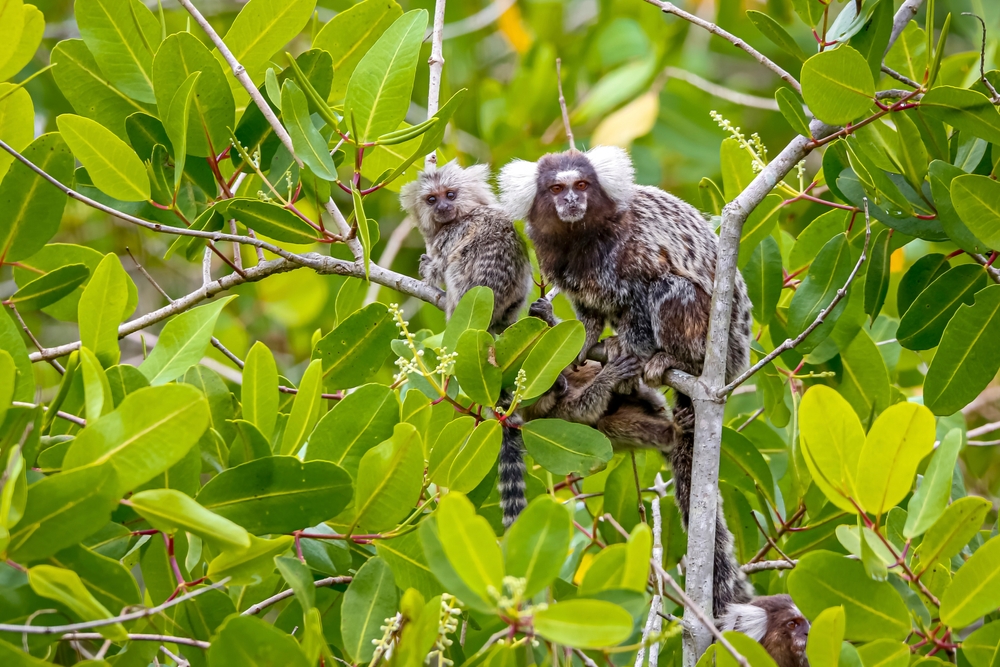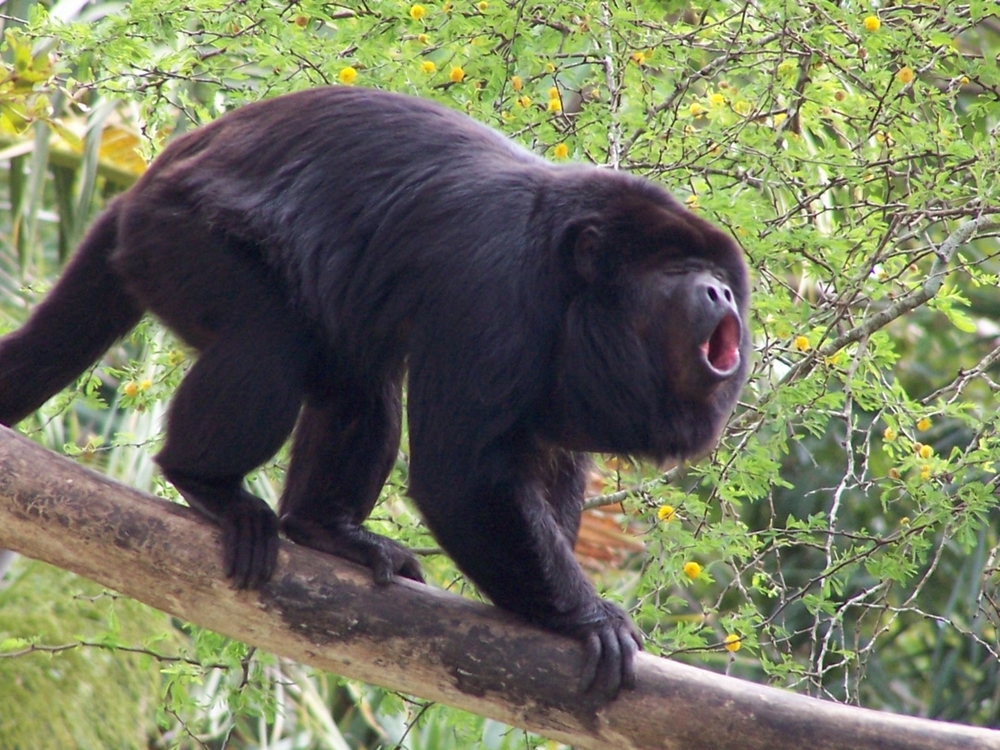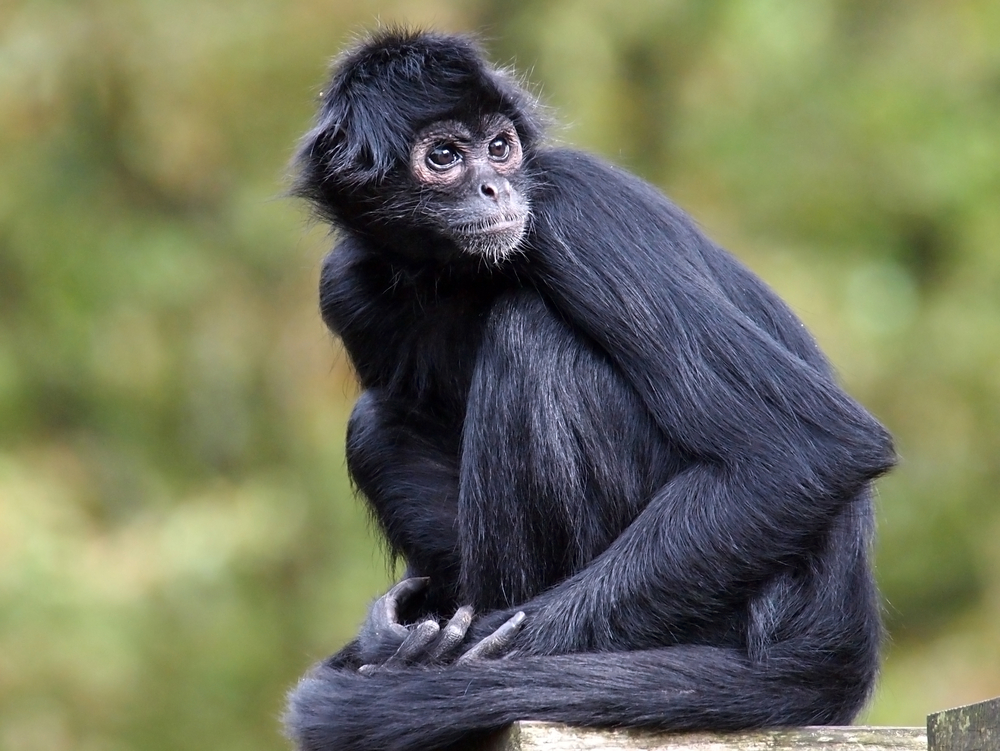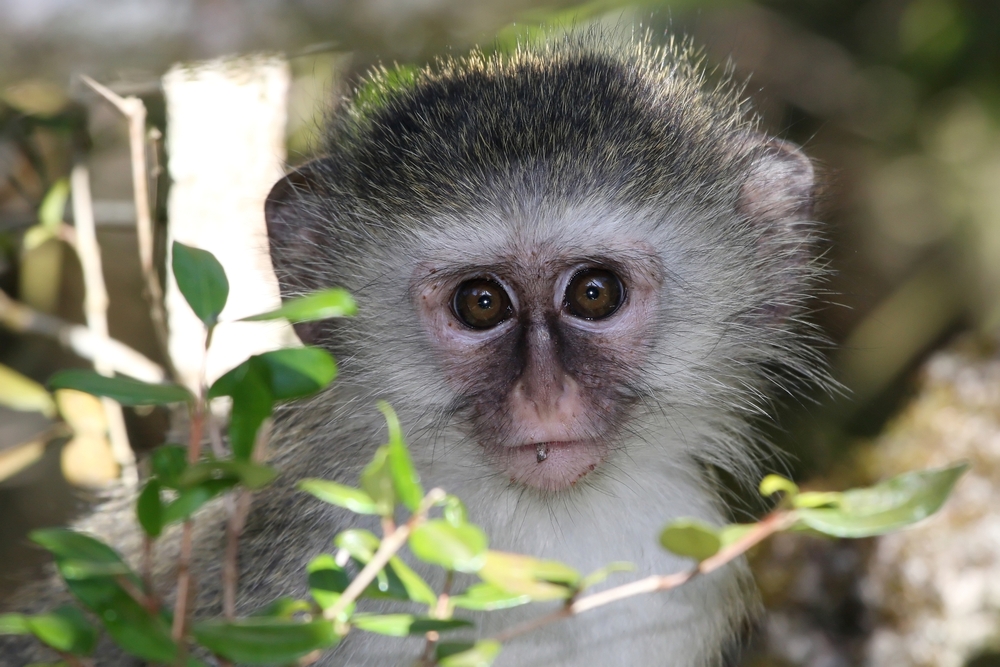About
#Mammals
The common marmoset (Callithrix jacchus) is a small, tree-dwelling primate native to the Atlantic coastal forests of northeastern Brazil. A member of the Callitrichidae family, which includes tamarins and other marmosets, this species is known for its distinctive white ear tufts, expressive face, and fast, agile movements among the treetops. It thrives in a range of environments, from humid forests to urban parks and plantations, showcasing remarkable adaptability.
Common marmosets typically weigh around 250–350 grams (9–12 ounces) and measure 18–23 cm (7–9 inches) in body length, with a long, banded tail that can reach up to 30 cm (12 inches). Their fur is soft and mottled gray or brown, with striking white tufts on either side of the head and a white blaze on the forehead. They have claw-like nails (instead of flat nails like most primates) that help them cling to tree trunks as they forage for food.
Their diet consists primarily of tree sap and gum, which they extract using specialized lower incisors. They also consume fruit, insects, small reptiles, and bird eggs. Common marmosets live in extended family groups of 3 to 15 individuals, often including a dominant breeding pair and cooperative helpers. Communication is rich and varied, involving vocal calls, body postures, facial expressions, and scent marking.
While not currently endangered, common marmosets face threats from habitat loss, pet trade capture, and disease transmission from human contact. Their growing presence in cities and disturbed areas raises concerns about hybridization with other marmoset species and ecological impact.
Social, vocal, and highly adaptable, the common marmoset is a fascinating representative of New World monkeys and an important species in behavioral and biomedical research.
Threatened:
Extinct
Critically Endangered
Endangered
Vulnerable
Near Threatened
Least Concern









































































